Gravel bike gearing: should you run 1x or 2x?
Whether you’re preparing to buy your first gravel bike or you’re in the process of cooking up your dream gravel build, one of the key decisions you’ll need to make is one ring or two
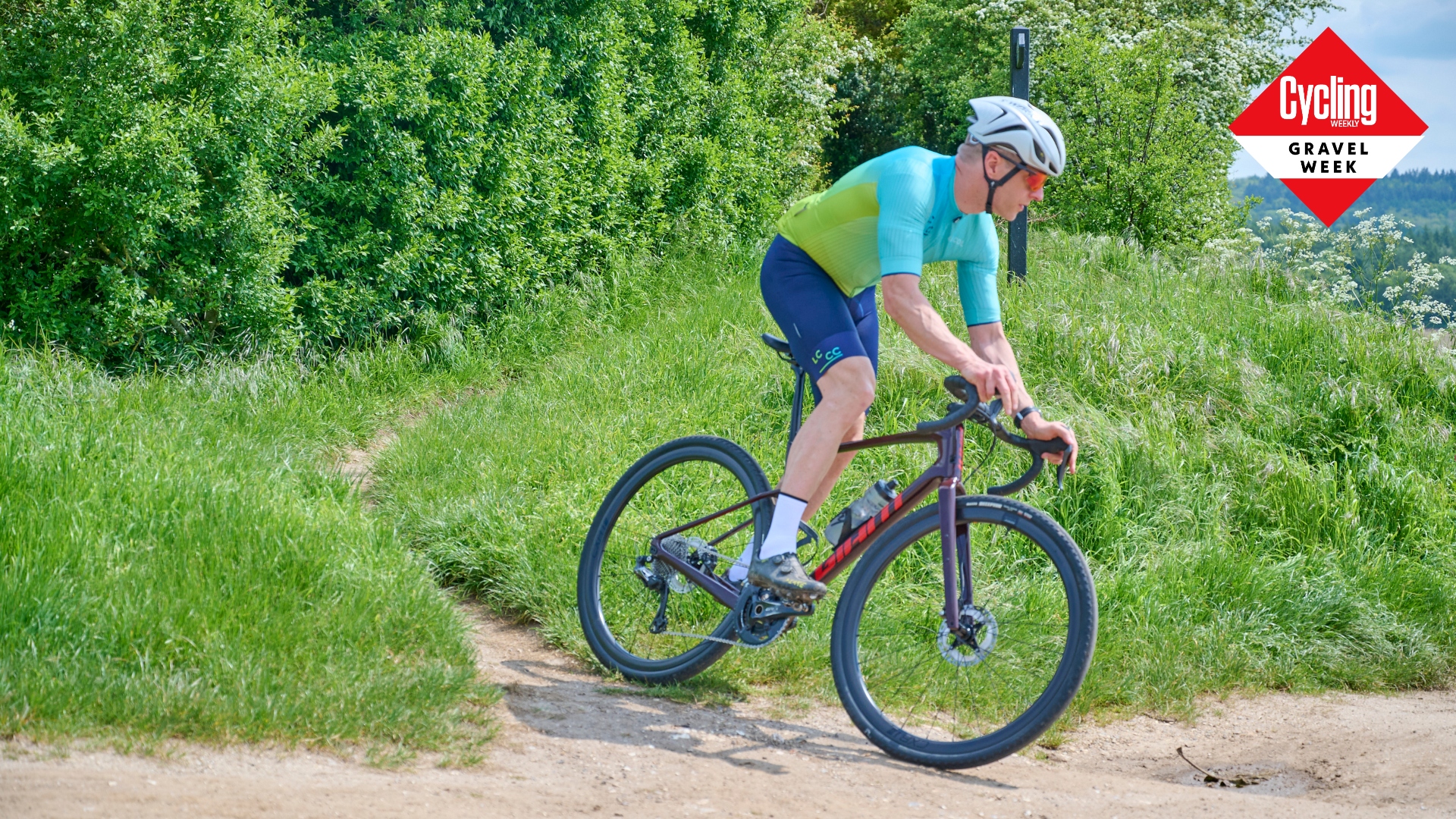
When buying a gravel bike, choosing between a single chainring ( known as 1x) and a double chainring ( hereby referred to a 2x) isn’t a straightforward choice.
You’ll find plenty of proponents of both drive chain options, both online and among your riding buddies. Both camps will insist they know best. But is there really a better option? That depends on a few important considerations.
Whether you opt for 1x or 2x will come down in part to the kind of gravel riding you will be doing, with many of the best gravel bikes set up to excel within a certain spectrum of riding.
Do you live in a city where you need to hit the asphalt first in pursuit of the gritty off-road stuff? Or are you blessed with mile after mile of smooth gravel and fire roads right in your backyard?
Perhaps you plan on racing on your gravel bike? How about going on a bikepacking adventure? Do you need your gravel bike to double-up as your winter road bike or as an all-weather commuter?
So many questions. So let’s dig a bit deeper into each drive chain option to help you find some answers.
1x - the simple life
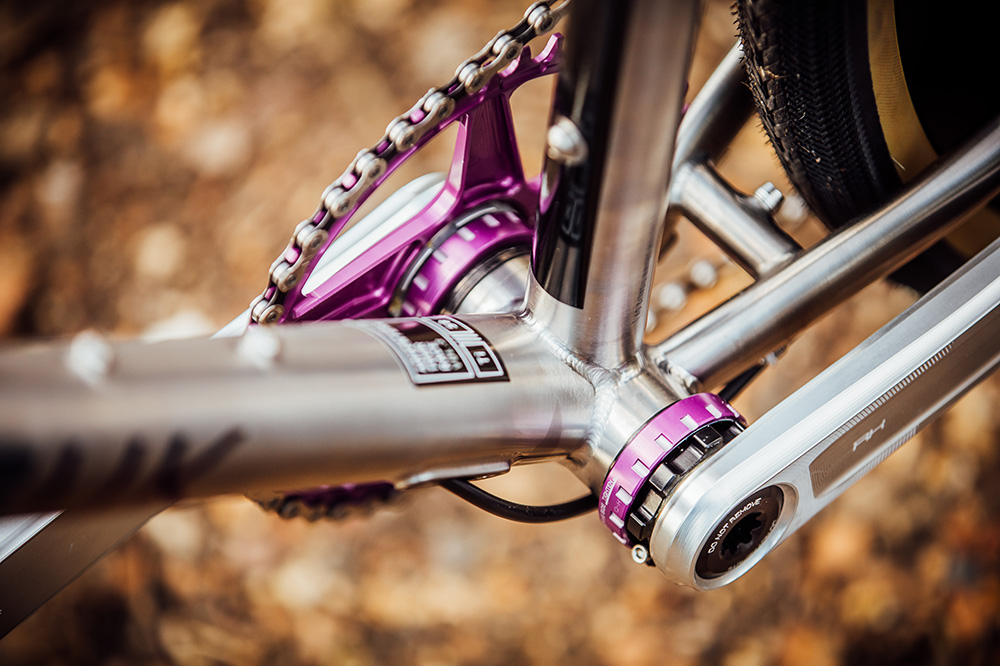
If you’re coming to gravel from a mountain bike background, you'll be familiar with the 1x set-up. Most mountain bikers ditched their front derailleur years ago and have never looked back.
But if you’re a roadie and this is your first foray into gravel you might be asking why you would knowingly get rid of half your gears? Simplicity, is your answer.
By losing a chainring you also lose other parts from your bike: the front derailleur, the shifting mechanism in the lever, and the cable that links them.
You’ll shed some weight, with a 1x set-up being on average 200-250 grams lighter than a 2x. And in its place you’ll receive plenty of reassurance, which could be just what you need if you’re riding gravel for the first time.
So where might this added confidence come from? In the case of 1x, simple also means reliable. Fewer parts, in theory, means there is less to go wrong.
A correctly set-up and maintained modern front derailleur works like a dream. But a knock here, a loss of cable tension and you’re no longer enjoying the sweet sound of compacted gravel under your tires. You’re listening to the annoying rattle of chain rub instead.
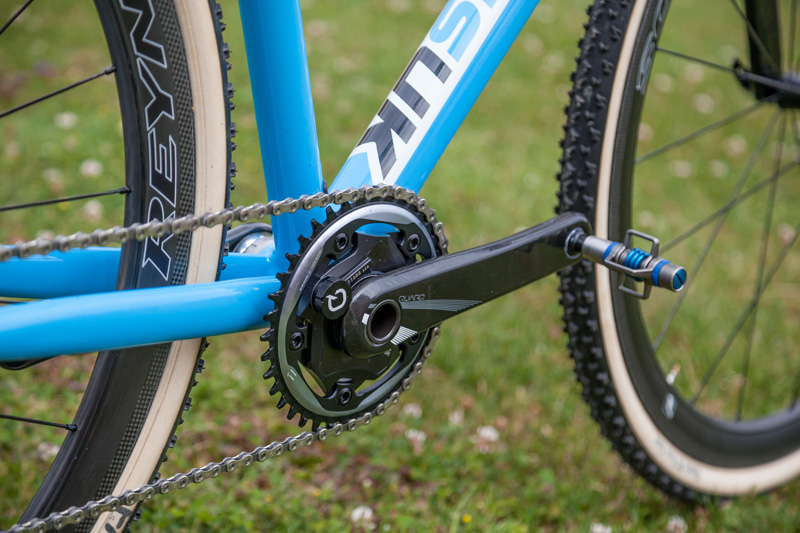
A 1x system delivers a super quiet and dependable ride thanks to a couple pieces of technology that have helped its rapid rise to prominence in the gravel scene.
A 1x system utilizes both a specially designed chainring and rear derailleur that in unison help to ensure that the chain stays in place, regardless of how rough the terrain may get.
To hold the chain secure, the chainring features a special tooth pattern, generally called narrow-wide in reference to the alternating tooth width.
Because the chainring doesn’t have to assist with shifting the chain as it does in a 2x system there is no need for a compromise here. Dropped chains will likely be a thing of the past.
The chainring is paired with a clutch derailleur, which in simple terms is a neat built-in device that adds resistance to the derailleur. It’s another slice of tech borrowed from the mountain bike world, which means it’s been tried and tested in the harshest of conditions. Goodbye, chain slap.
Having a single chainring also makes finding the right gear straightforward. For a start you’re only ever using one shifter. When the terrain, or your legs, dictate you simply shift up or down to find the gear you need.
No more having to consider whether you need to move from the big chainring to the small and then compensating with a couple more shifts on the cassette.
Naturally the big three groupset brands - Shimano, SRAM and Campagnolo - all offer 1x set-ups.
Shimano GRX is the Japanese giant's dedicated gravel groupset. With regards to the 1x options, you can choice both mechanical and electronic, with the former offered in both 10 and 11-speed configurations and the latter as 11-speed only. However, there was a sighting of a 12-speed mechanical version of GRX at this year's Unbound gravel race, although we have no details of its release as yet.
SRAM produce 1x wireless versions of its three main groupsets - Red AXS, Force AXS and Rival AXS - all of which are now 12-speed and utilise a 10t sprocket. In addition it also offers an XPLR rear mech, which allows you to run a 10-44t cassette.
There are also mechanical 11-speed 1x versions of all three, plus the entry level Apex 1. However, with SRAM being all-in on its AXS wireless technology these cable operated groupsets may not be around forever.
Campagnolo's 1x approach differs. The Italian brand offer just one dedicated gravel groupset - Ekar - that's built around a 13-speed cassette. At the time of writing it's a mechanical only system and can stake claim to be the lightest gravel gruppo on the market.
Ekar’s gearing range is actually wider than that of a 46/30t chainset paired with an 11-32t 11-speed cassette. It also delivers the same number of single tooth jumps in its cassette progression as that 11-32t cassette, so you’re not likely to find yourself stuck between two gears, one too big the other too small.
The downside to running a 13t cassette? Squeezing 13 sprockets onto a freehub does make it sensitive. A knock to the mech hanger or some friction in the gear cable can throw the shifting off more easily than 11 or 12-speed set-ups. And of course if you're running an electronic system you'll be doing away with sticky gear cable for good.
2x - a case of what you know?
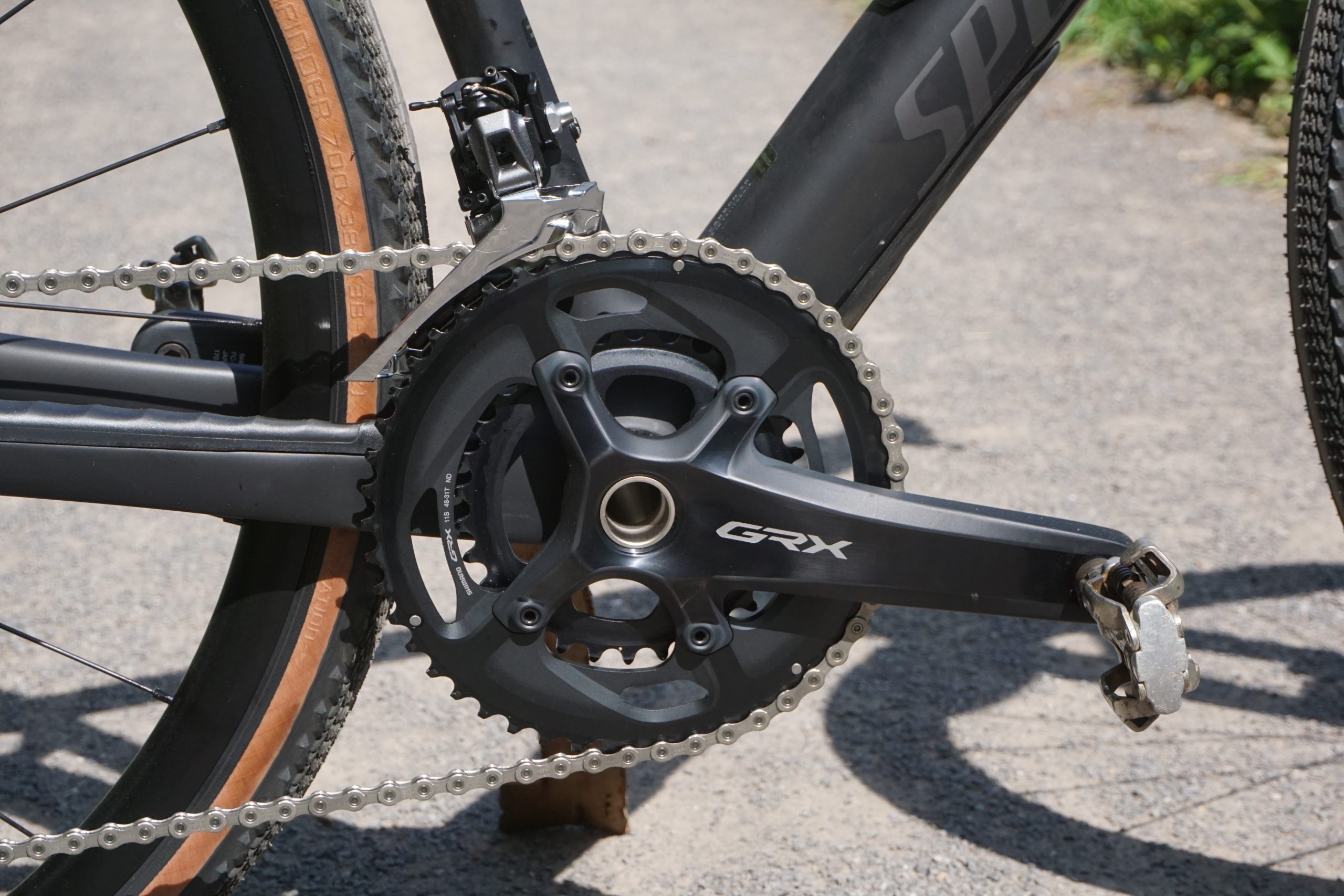
If you ride a road bike then the 2x system is likely a trusted friend. Continually refined over the years it now works with great efficiency.
It’s the preferred choice of both Grand Tour winners and weekend warriors the world over. Having two chainrings provides a significant choice of gear ratios when paired with a 10, 11 or 12-speed cassette.
The wide range between the high and the low gear ratios translates to being able to go fast and climb the steep stuff all on the same bike. This option will continue to suit you if some or a lot of the riding you do on this bike will take place on the tarmac.
As for its specific merits on gravel, a 1x set-up offers an advantage to newer riders and those used to riding a 1x mountain bike. The familiarity of riding a 2x on the road translates when you head off the beaten path, too.
Shifting will feel intuitive, allowing you to focus your attention on the gravel ahead. It’s also important to note that both Shimano’s dedicated GRX gravel groupsets and SRAM’s AXS groupsets also offer a clutch rear derailleur on their 2x systems, providing improved chain security that was once the domain of the 1x only.
Gearing - range and gaps
The gearing ranges offered by a 1x and 2x set-up may ultimately be the deciding factor in your decision. Gearing ratios can be a little confusing so we’ll keep it simple and deal with the two primary concerns: range and gaps.
Range simply means the difference between your easiest gear and your hardest gear.
A modern 2x drive chain designed with gravel riding in mind is probably going to win out here. Shimano’s GRX 2x chainset is offered in two options, including a 48/31t combination, providing a huge 17t range on the front. Match this with an 11-speed 11-34t cassette and you have an expansive range that a 1x set-up can’t quite match.
SRAM’s AXS groupsets are also designed to offer you the widest possible range - its Force AXS chainset comes in a number of options including a super wide 43/30t option that can be matched with a 10-36t cassette.
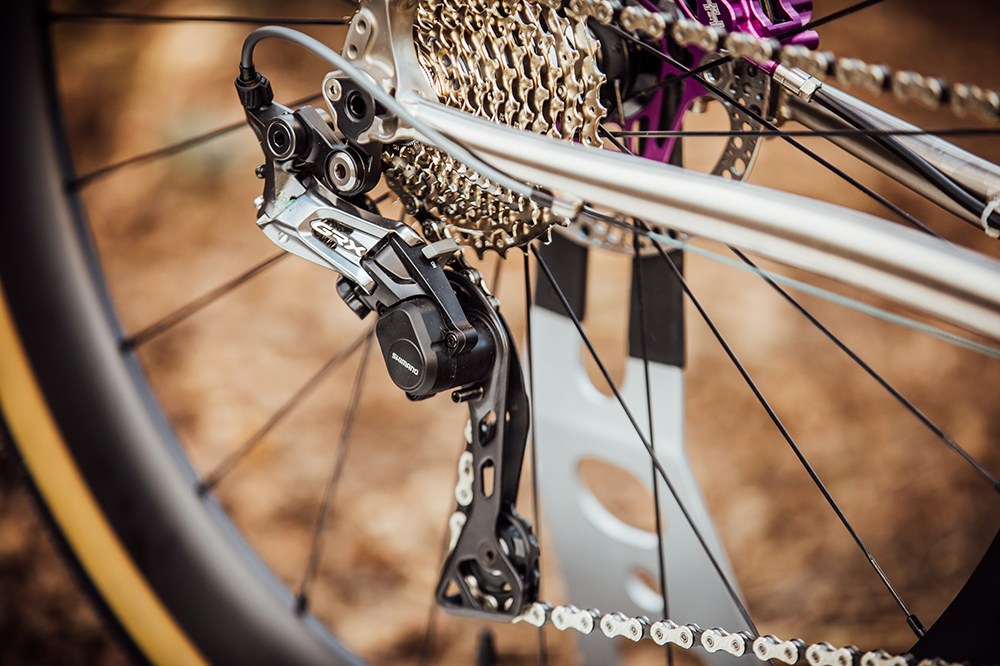
But that’s not to say that a 1x doesn’t still offer an impressive range. A typical set up using a dedicated SRAM 1x groupset will see you riding a 38, 40, 42 or 44t chainring with an 11-speed 10-42t or 11-42t cassette. Switch to AXS and this becomes 12 gears, with the aforementioned 10-44t cassette and option if you're using the XPLR rear mech.
A comparable set-up is also available with Shimano GRX. The wide range cassette provides a low gear that will get you up the steep stuff while still offering a high gear that will allow you to get plenty of speed up before you spin-out.
The recent advent of “mullet” builds (business at the front, party at the back) which sees 10-50t mountain bike cassettes and rear derailleurs paired with drop-bar road shifters has seen 1x ranges pushed even further.
Perhaps the biggest difference between the two options is found in the gaps between the gears - also referred to as jumps or steps.
Because a 2x has two chainrings it can be run with a closer ratio cassette without sacrificing its overall range. Closer ratios make the jumps between gears smaller. This allows you to easily match the gear with your desired pedalling cadence.
It translates into smooth and efficient pedalling, especially on tarmac and compacted gravel surfaces. It’s also helpful if you’re riding in a group and need to maintain a pace that you’re not dictating.
Compare this to a 1x system and you’ll see a significant difference. The wide range cassette means there are larger jumps between gears. You might find this to be less of an issue on gravel - particularly on rough surfaces when you’ll be travelling at slower speeds - but roadies who decide to opt for a 1x will notice the gaps when compared to their road bike.
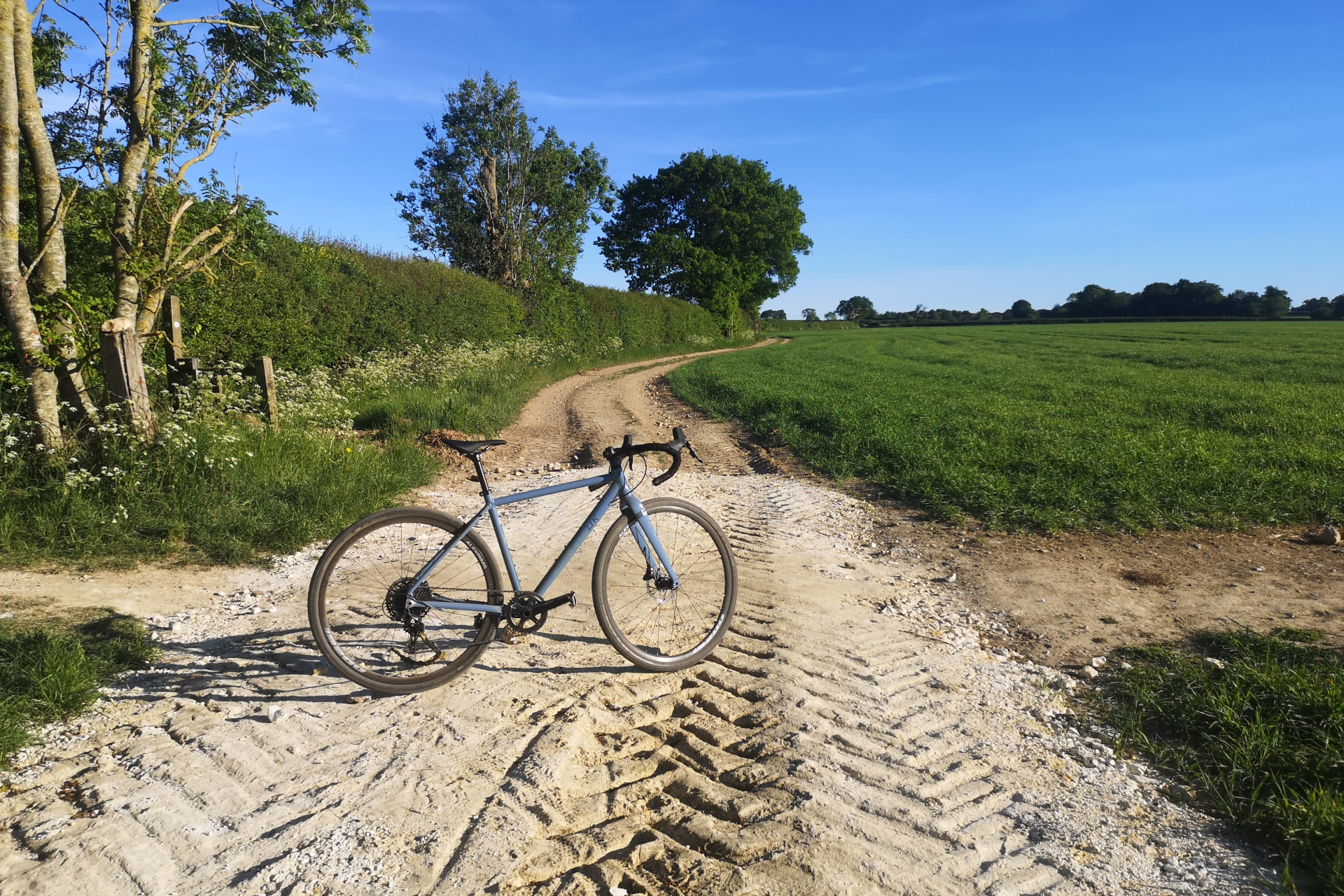
Your gravel ambitions
How do these gearing options match with your riding plans? If you’re going to be riding long, undulating gravel roads and steep singletrack, you’ll need plenty of range. Both a 1x and 2x deliver this, so it may just come down to preference.
But if you’re also planning to race on your gravel bike or use it on a mix of paved and gravel roads then a 2x could be the way to go.
If you’re certain that you will use your gravel bike as a dedicated off-road machine this could tip the balance in favour of 1x.
Add in the desire to undertake a few off-road bikepacking trips into the wilderness where you’ll need to be mechanically self-sufficient, and the greater simplicity of a 1x set-up makes a good deal of sense.
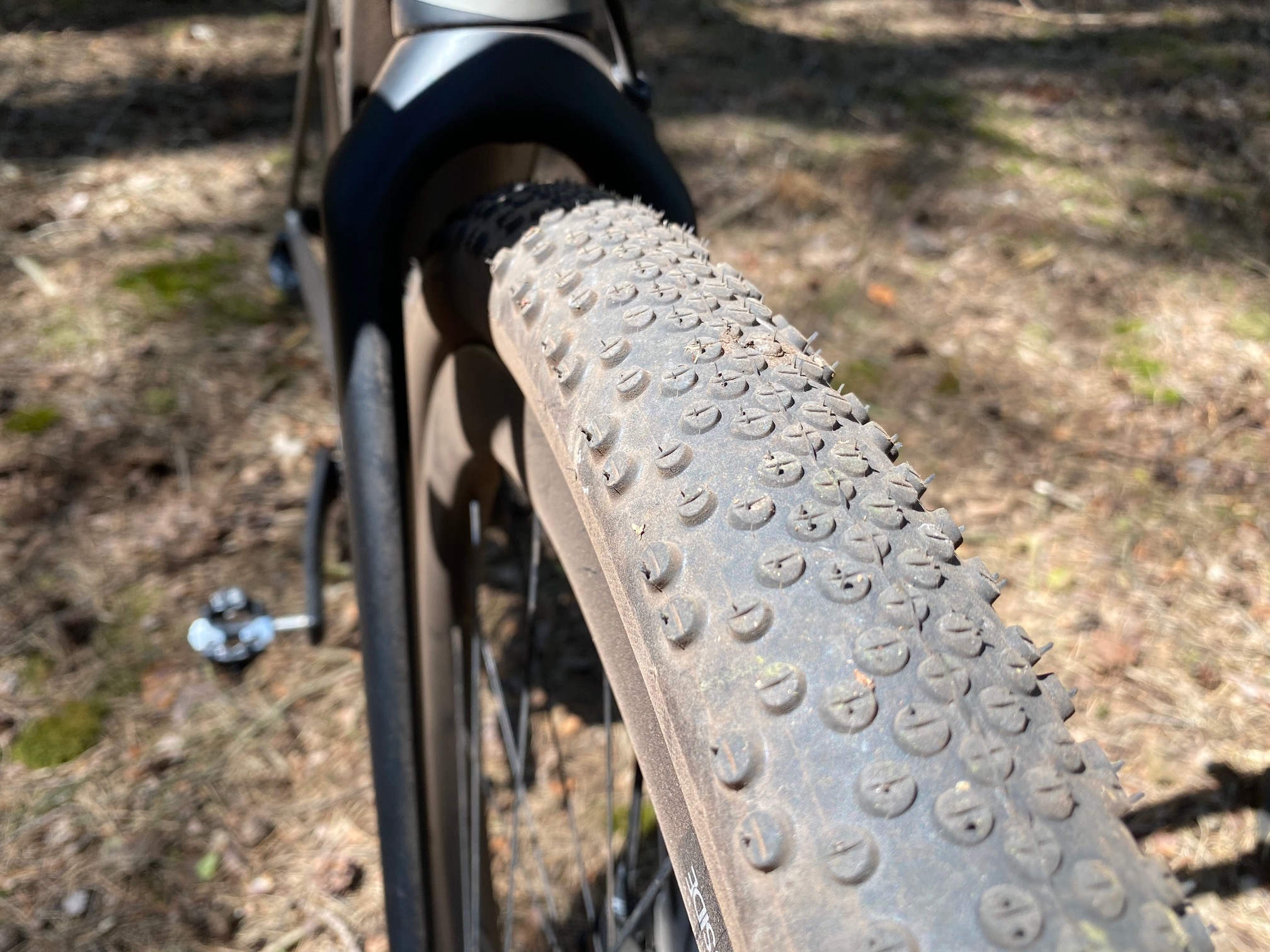
Other considerations
A 1x drive chain allows you to run wider tires. Without a front derailleur to restrict clearances, frames can be designed with relatively short chainstays.
This keeps the ride nimble, while still allowing room for tires in the 42-50mm wide range (depending on whether you have 700c or 650b size wheels).
Wider tires can be run at lower pressures, improving traction and providing additional cushioning - just what you need if you’re planning on riding on rocky, undulating roads and trails.
The simplicity of a 1x drive chain also helps create a clean looking bike. If aesthetics matter to you (of course they do, you’re a cyclist!) then this seemingly secondary point could well be worth giving some serious thought to.
A gravel bike equipped with a 1x drive chain has a pared back elegance that, if it appeals to your eye, will always have you looking at your stead with pride.

Thank you for reading 20 articles this month* Join now for unlimited access
Enjoy your first month for just £1 / $1 / €1
*Read 5 free articles per month without a subscription

Join now for unlimited access
Try first month for just £1 / $1 / €1
Get The Leadout Newsletter
The latest race content, interviews, features, reviews and expert buying guides, direct to your inbox!
Luke Friend has worked as a writer, editor and copywriter for twenty five years. Across books, magazines and websites, he's covered a broad range of topics for a range of clients including Major League Baseball, the National Trust and the NHS. He has an MA in Professional Writing from Falmouth University and is a qualified bicycle mechanic. He has been a cycling enthusiast from an early age, partly due to watching the Tour de France on TV. He's a keen follower of bike racing to this day as well as a regular road and gravel rider.
-
 How I got my non-cyclist friend hooked on riding bikes — and how you can, too
How I got my non-cyclist friend hooked on riding bikes — and how you can, tooWith a little bit of gentle guidance, “bikes aren’t my thing” can turn into “when’s our next ride?”
By Marley Blonsky
-
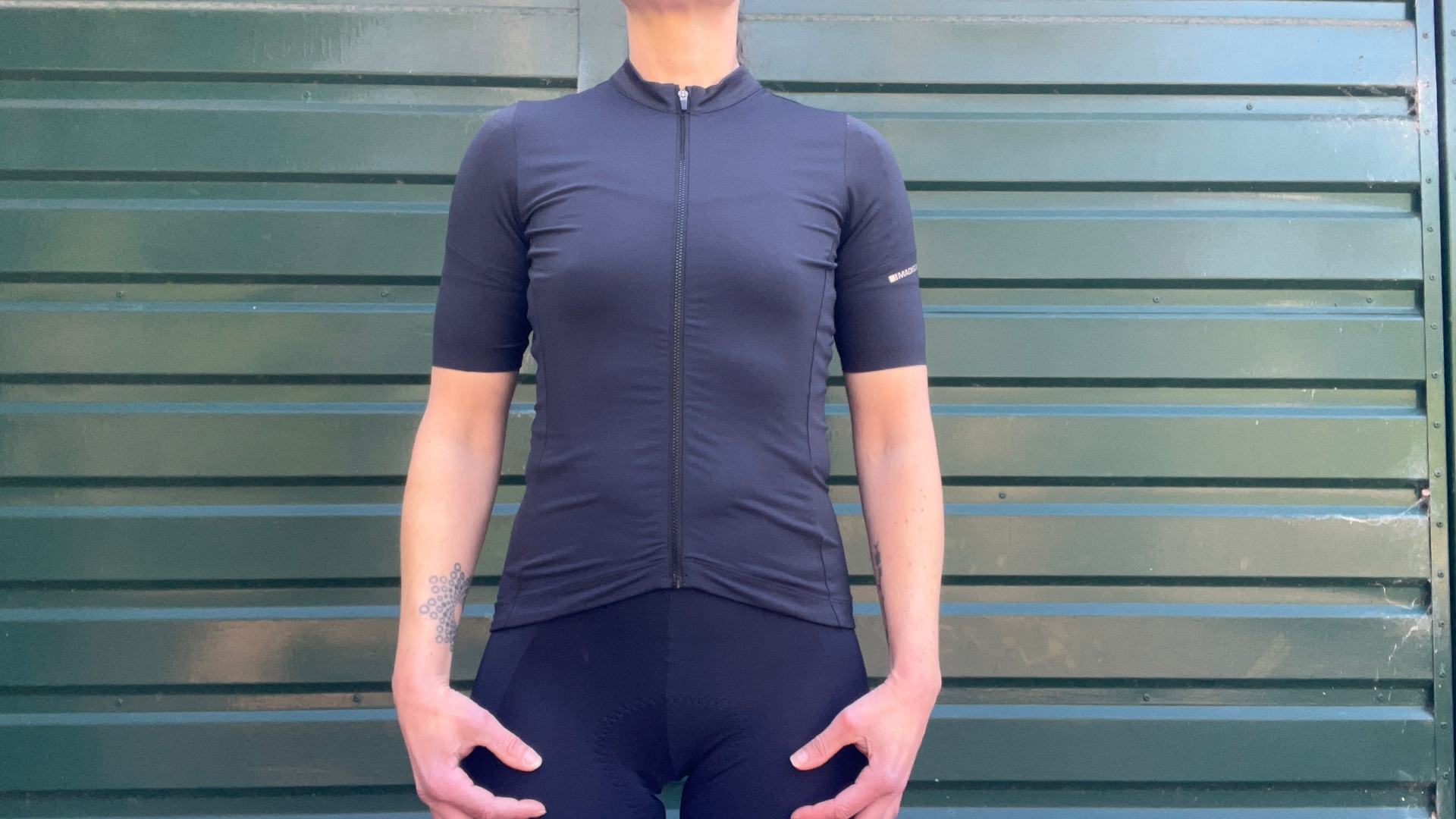 Madison Flux short sleeve jersey review: functional and affordable
Madison Flux short sleeve jersey review: functional and affordableThe road cycling jersey delivers top performance for a budget-conscious cyclist
By Hannah Bussey
-
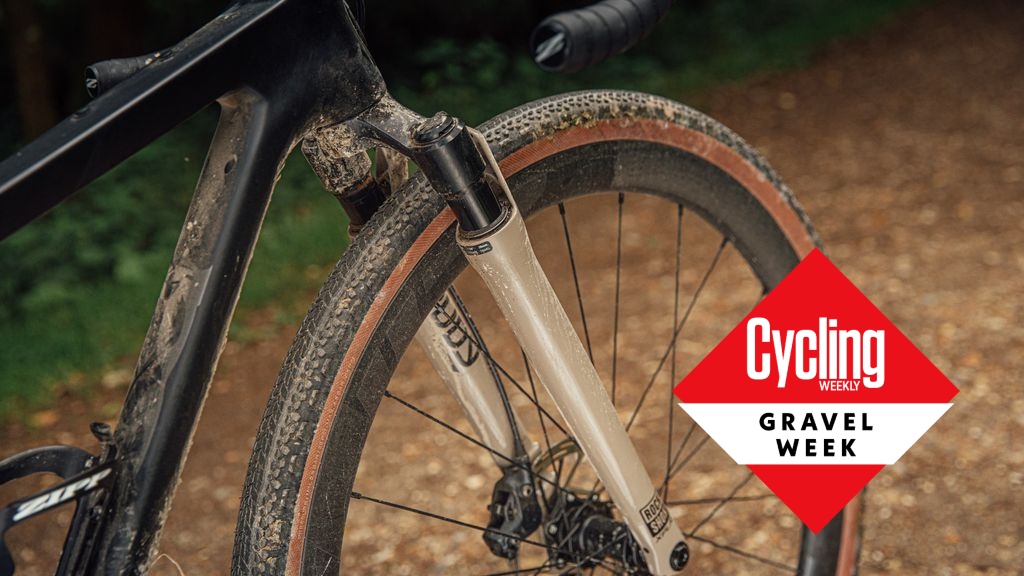 I've tried every type of 'gravel bike suspension' going - here's what I really think of these systems, as a pro mechanic
I've tried every type of 'gravel bike suspension' going - here's what I really think of these systems, as a pro mechanicGravel bikes are becoming more and more capable, but, do they really need more squish? Mechanic Glen Whittington has tested most systems on the market, and says, 'it depends'
By Glen Whittington
-
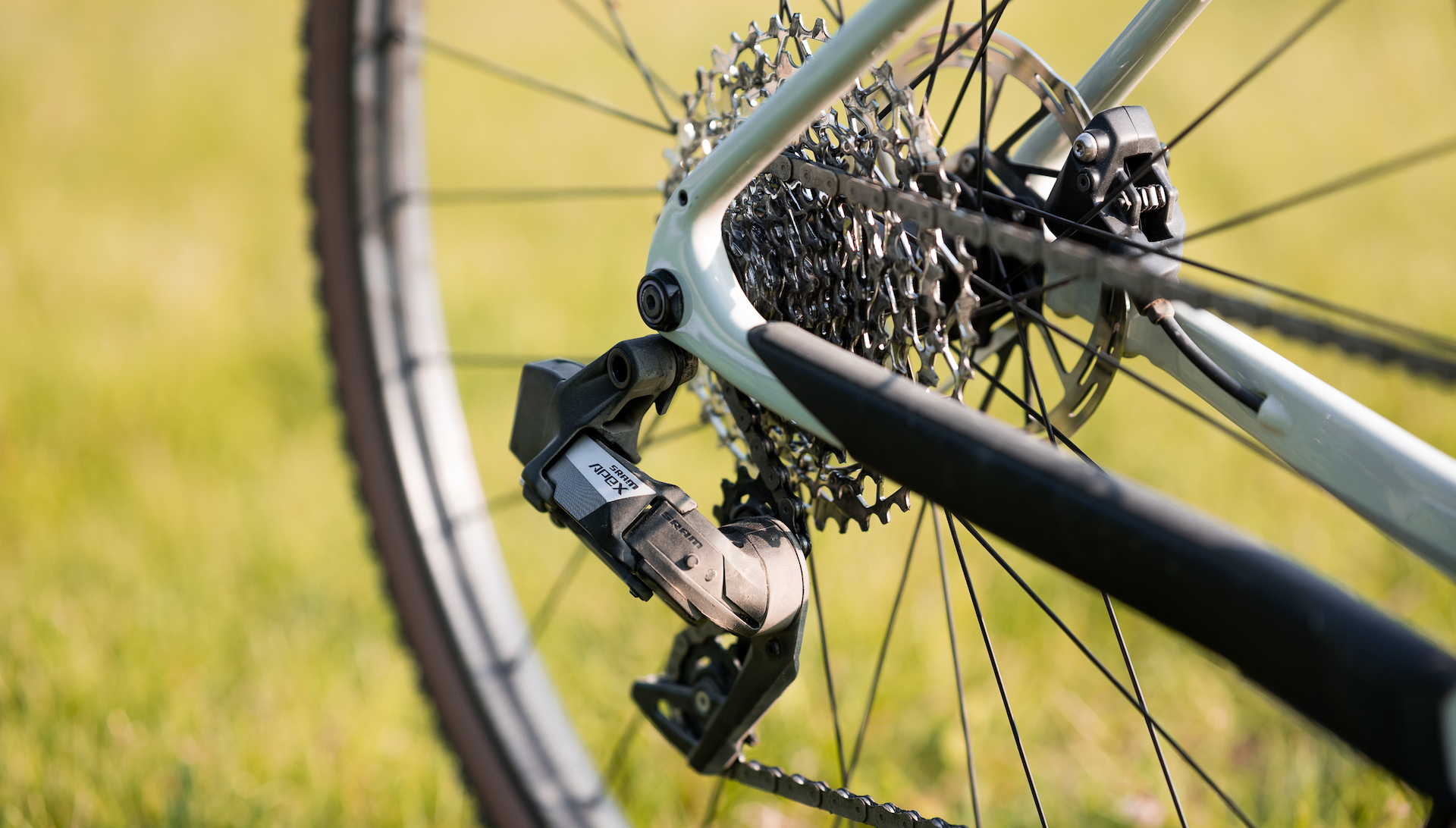 A $1300 electronic, wireless groupset? Yes, please! SRAM introduces Apex AXS — the lowest-priced electronic groupset yet
A $1300 electronic, wireless groupset? Yes, please! SRAM introduces Apex AXS — the lowest-priced electronic groupset yetSRAM introduced its Apex AXS electronic groupset, the lowest priced electronic groupset yet, thereby making electronic shifting accessible to newer audiences
By Anne-Marije Rook
-
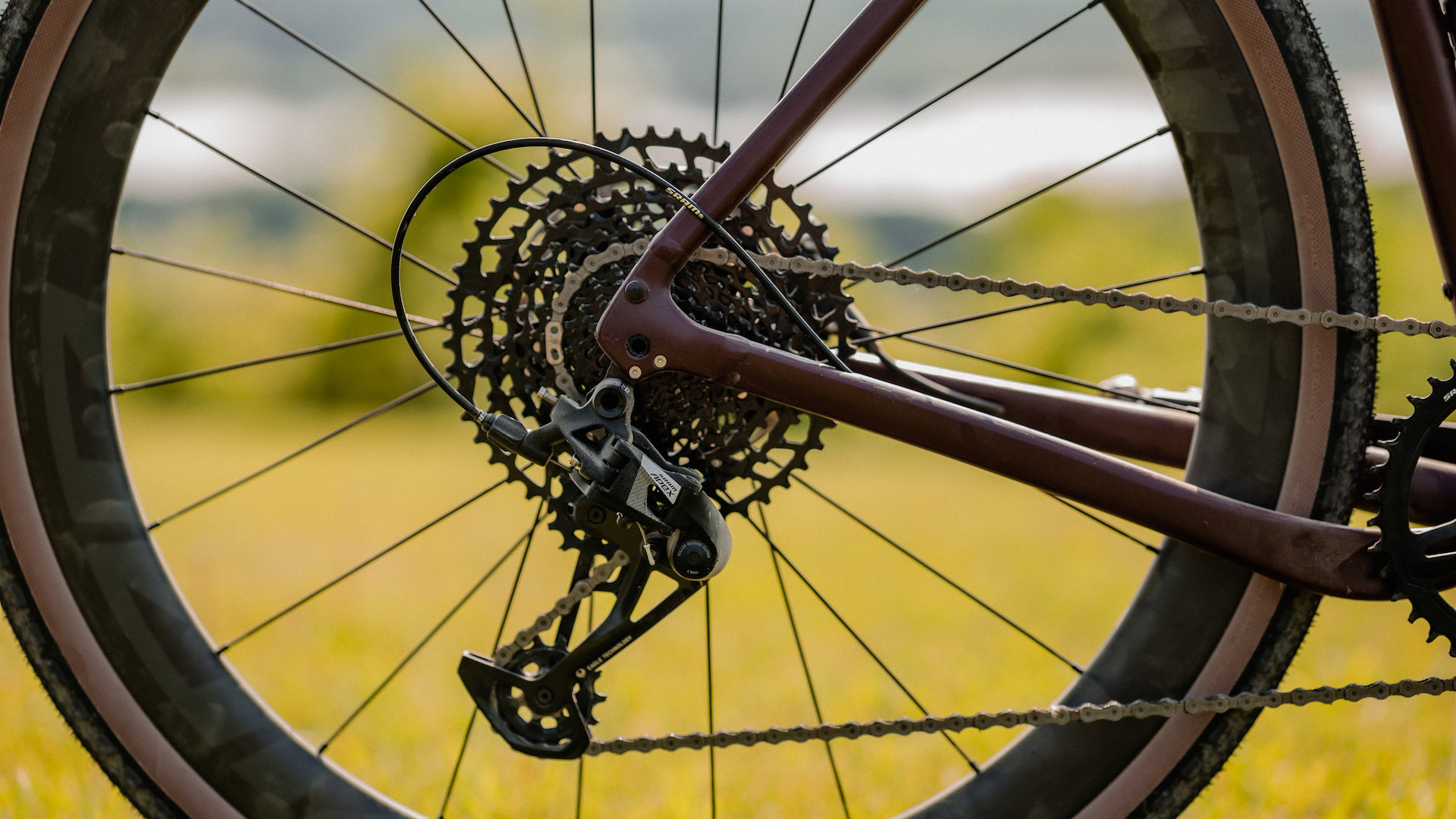 SRAM brings 12-speed, wide-range gearing to the gravel riding masses with Apex Eagle and Apex XPLR
SRAM brings 12-speed, wide-range gearing to the gravel riding masses with Apex Eagle and Apex XPLRWith its 12-speed Apex Eagle and XPLR groupsets, SRAM brings wide-range gravel gearing to the masses for less than $1,000.
By Anne-Marije Rook
-
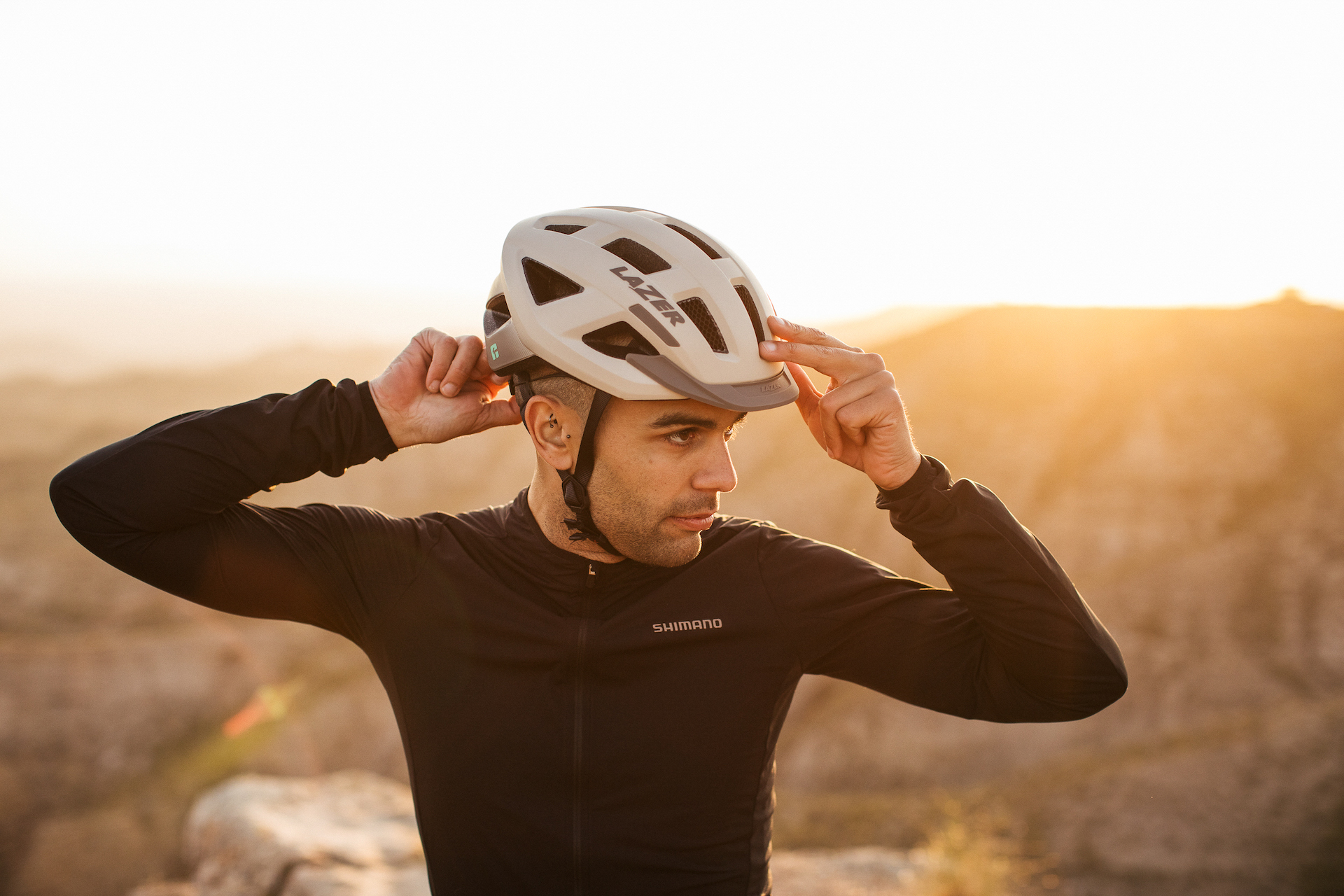 Lazer releases gravel-specific helmet, Cerro KinetiCore, for mixed-terrain protection
Lazer releases gravel-specific helmet, Cerro KinetiCore, for mixed-terrain protectionLazer today launched its latest entry-level helmet: the gravel-specific Cerro KinetiCore. Here's why it caught our eye.
By Henry Lord
-
 The Ultimate Gear Test: this bike and gear survived an epic edition of the Unbound XL
The Ultimate Gear Test: this bike and gear survived an epic edition of the Unbound XLThe Unbound XL is a true test of fitness, self-sufficiency, tenacity and equipment. Here’s how this rider's bike and gear fared after 352 miles of gravel, mud, rain and thunderstorms.
By Anne-Marije Rook
-
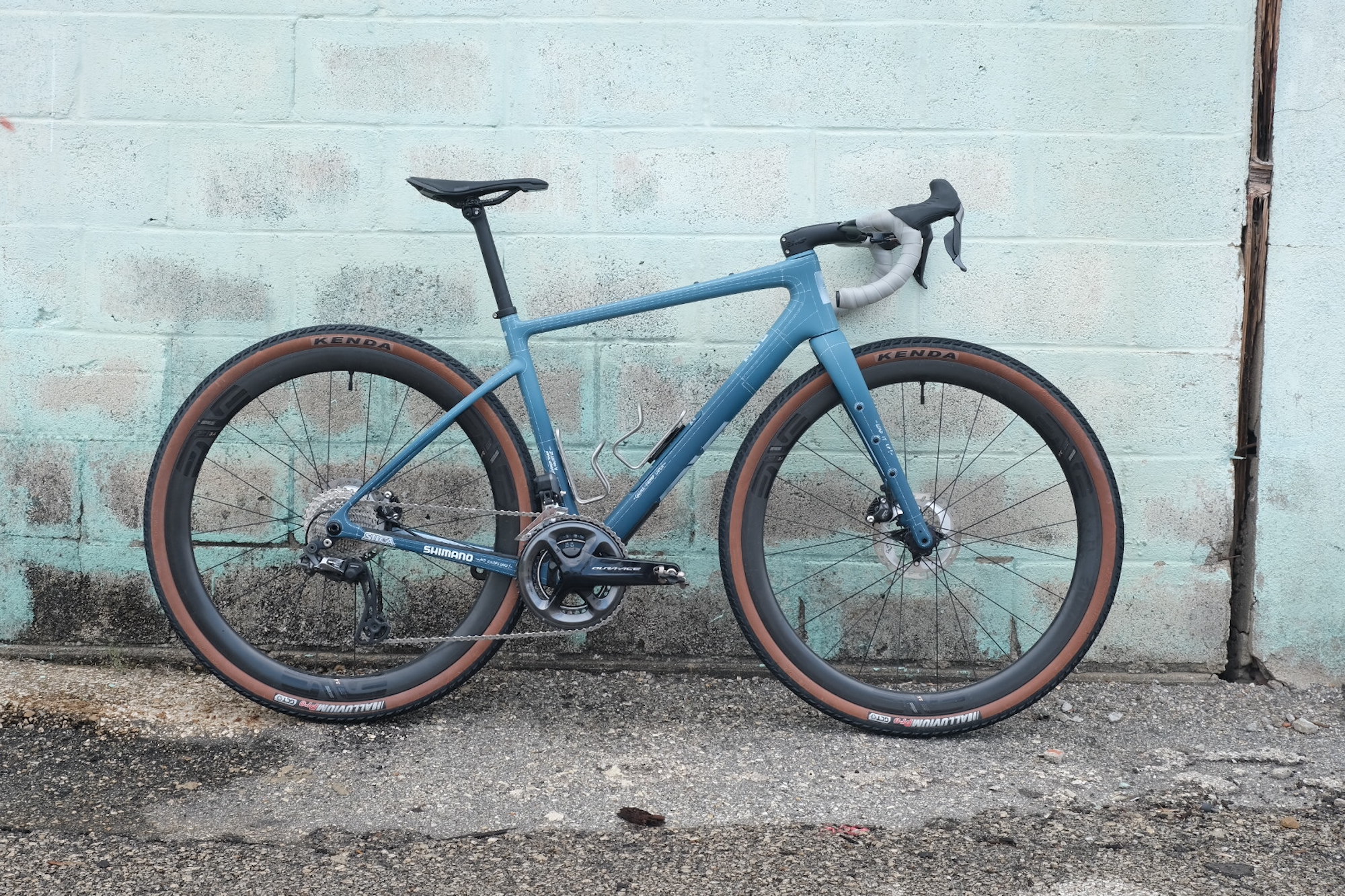 Bikes of Unbound Gravel 2023: The rigs taking on the world's biggest gravel race
Bikes of Unbound Gravel 2023: The rigs taking on the world's biggest gravel raceCustom bikes and the pinnacle of gravel tech was on full display in Emporia, Kansas, for the world's biggest gravel race, Unbound Gravel
By Henry Lord
-
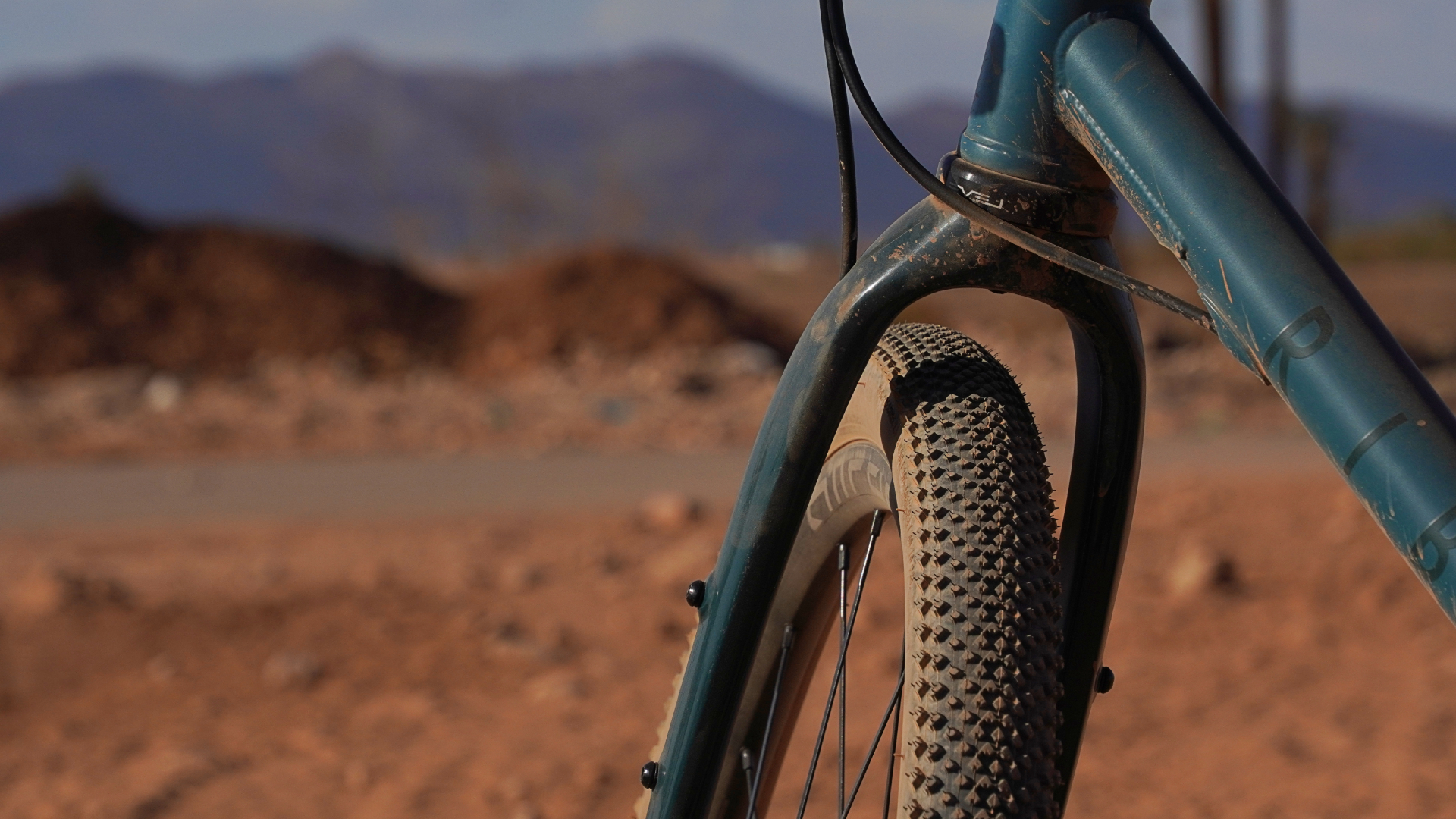 What is the best tire size and tread pattern for gravel bikes?
What is the best tire size and tread pattern for gravel bikes?We take you through how to (quickly!) determine which gravel tires will suit you best
By Luke Friend
-
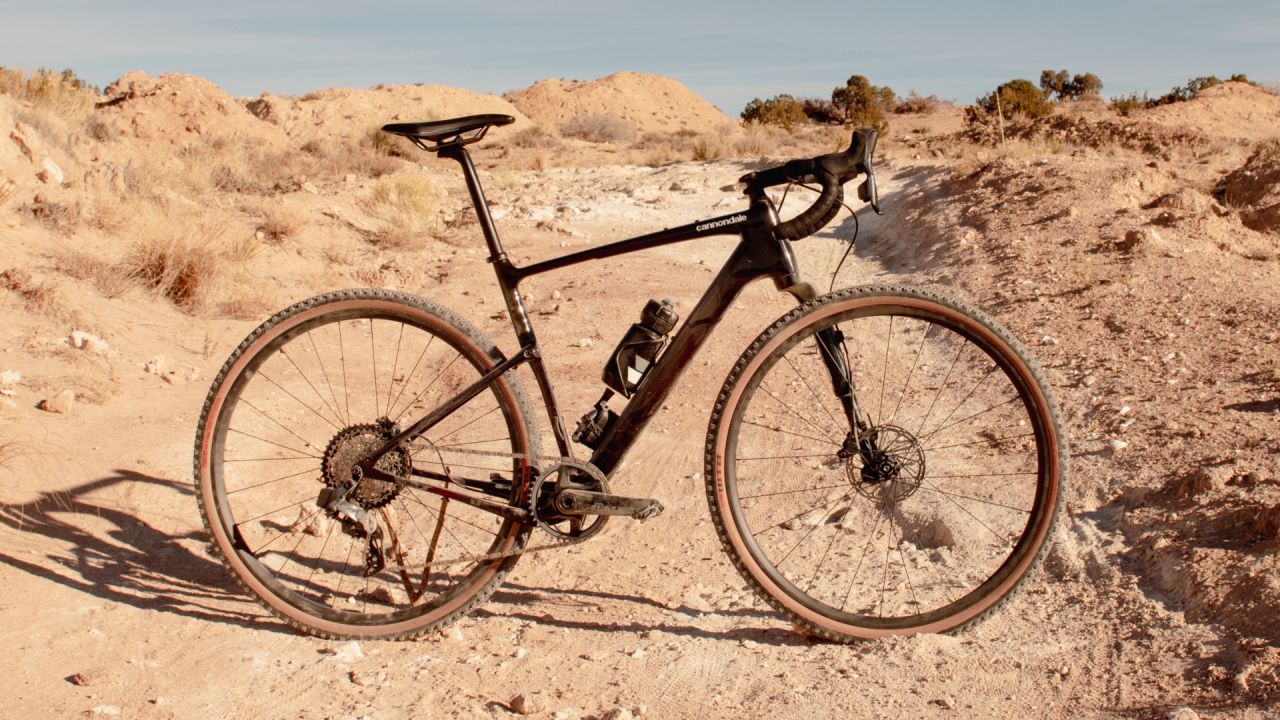 Eight features on the Cannondale Topstone range that make it great for gravel adventures
Eight features on the Cannondale Topstone range that make it great for gravel adventuresThis category defying bike has all the clearance, suspension and mounts to adventure in style and comfort
By Danielle Tarloff